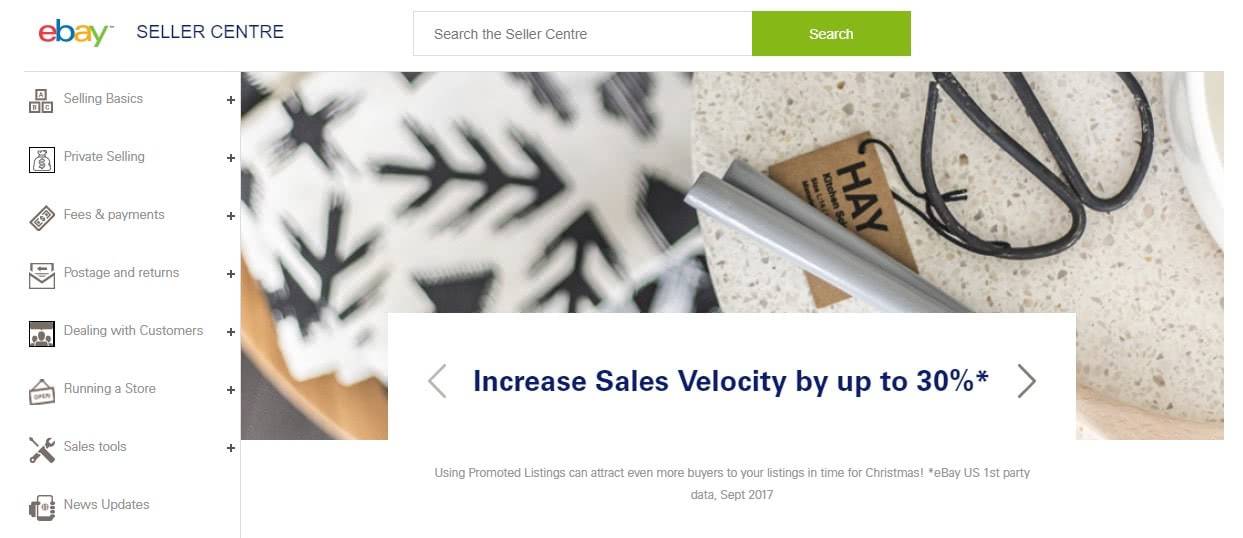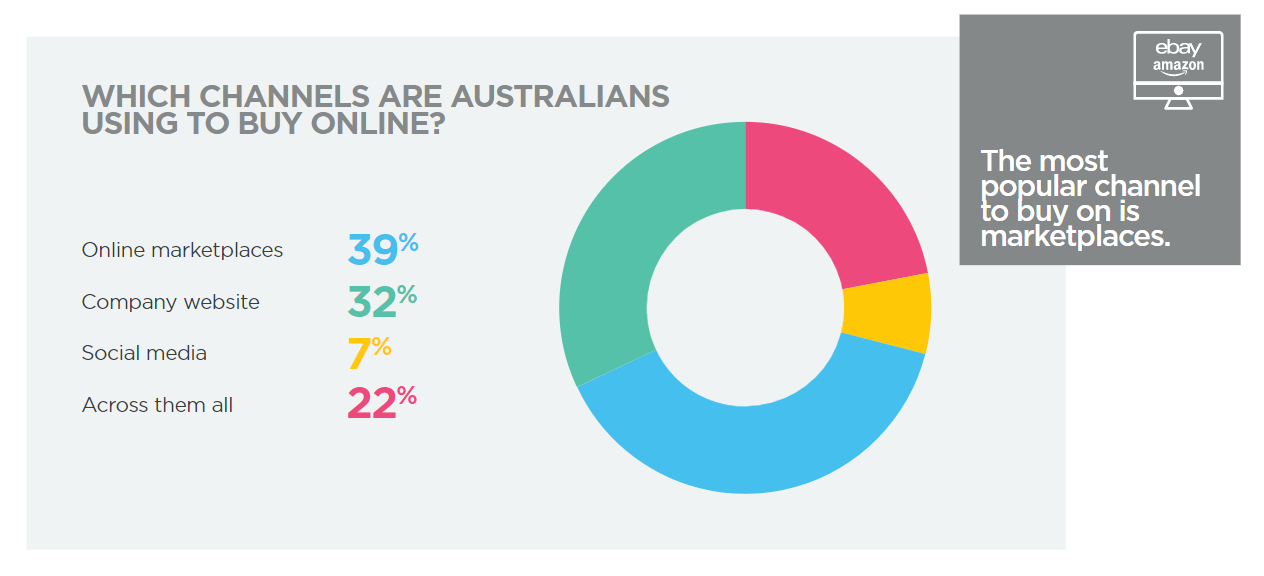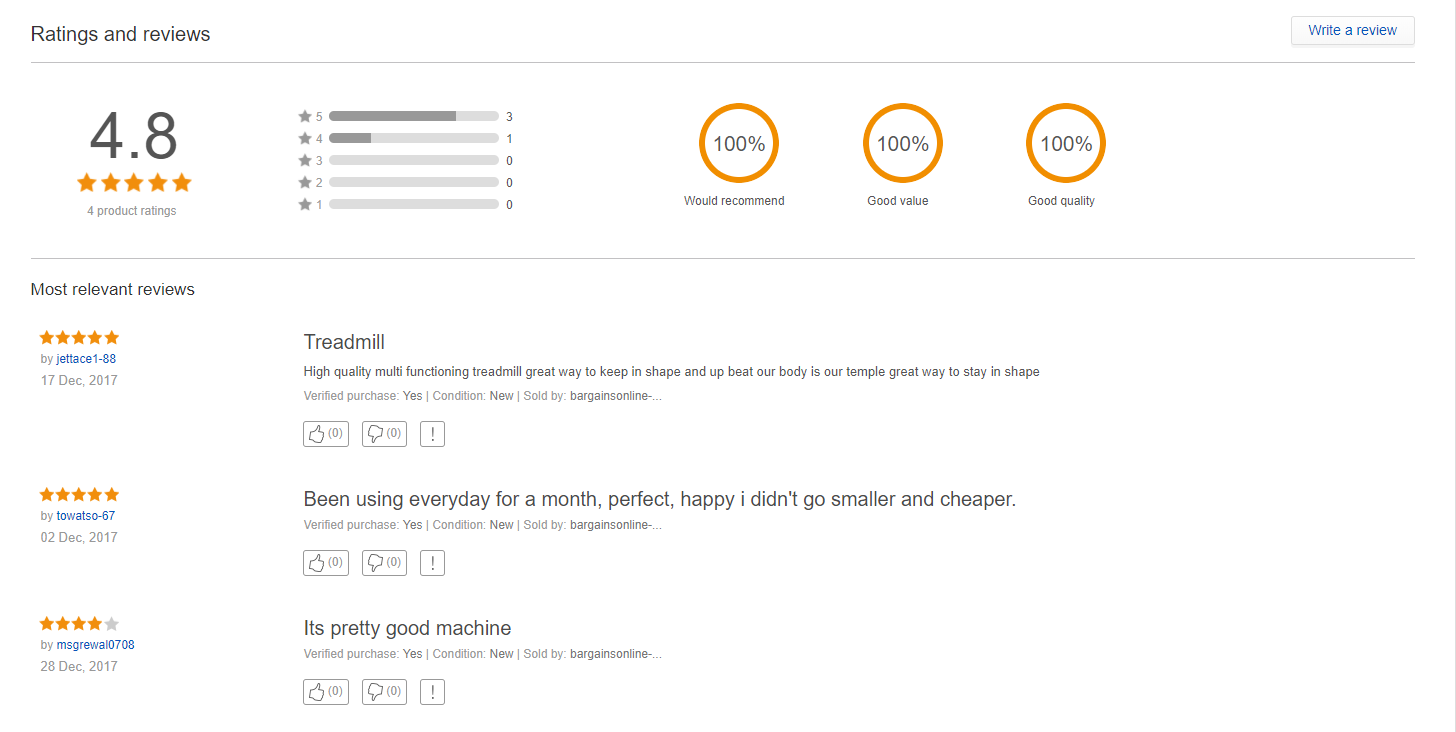
Business • Marketplaces

Your business is up and running, your website is optimized and starting to gain traction and you’re beginning to see real growth in online sales. You’ve even finally managed to get your fulfillment process running smoothly. It’s no longer a matter of if, but when you’ll spread your wings and expand your operations from a single channel business to a multi-channel ecommerce retailer.
Your research has no doubt lead you to discover that online marketplaces in Australia, and indeed the world are experiencing a huge growth in popularity amongst both consumers and retailers.
And so the next step in the process is to decide “Which online marketplace is right for me, or should I sell on both?" An omni-channel strategy will be key for many retailers in 2018 and while there are a number of channels in the running, Amazon Australia and eBay are the two industry heavy-weights.
So let us help you make the right decision for your business with our objective comparison (and infographic) of each of the key facets of Amazon and eBay from a customer, seller and brand perspective.

eBay
Amazon
Amazon is in 180 countries throughout the world and boasts a total of 310 million users compared to 171 million shoppers on eBay. eBay does however, operate 39 country-specific sites, whereas Amazon only has 13.
These impressive numbers are probably only relevant to those businesses who are looking to enter particular international markets though. If you’re looking to expand into North America, then Amazon is your obvious choice – other markets may require more careful consideration. For instance, Amazon in Europe offers a unified system allowing you to sell to in all five of their European marketplaces, whereas European eBay sites are only accessible through individual marketplaces, meaning more work at your end.
But what about Australia? Given that Amazon Australia has only just entered the market, it’s not surprising to discover that it only has 3.8 million visitors vs eBay.com.au’s 7.8 million users. Although Amazon’s numbers are sure to change over the coming months and years, if you’re looking at sheer numbers of Australian eyes, eBay wins at this point in time, hands down.With eBay’s 18-year history in the Australian marketplace, Amazon would appear to have its work cut out for it in taking on our one big ecommerce player. However, we are talking about Amazon here – recognised as being the number one brand name for reputation as determined by a 2016 Nielsen survey. Keep in mind though; sellers are still only able to set up shop in Amazon Australia by invitation only. There are a couple of great advantages in this.
Just be prepared for what comes after you’ve been accepted as a seller—Amazon is very particular about everything from product descriptions to images—only once it’s one hundred percent correct will your listing be published. And let’s just say, eBay is a little more forgiving on this front.

Which brings us to our next point…
It could be said that each of these online marketplaces has been created with a different focus.
Let’s look at Amazon first: Amazon is and always has been about its customers.
Their vision statement reads
‘We seek to become Earth’s most customer centric company’
and they’ve been very successful at it, ranked as the number one in online retail customer service for almost a decade—not to mention their 310 million loyal users. Therefore, setting yourself up as a retailer on Amazon was never meant to be easy. You need to dot every i and cross every t, until Amazon is happy to allow you access to their users. While it may be a lengthy process, it’s worth it as it means you’ll have that element of trust right off the bat (although building up positive reviews and seller history is still important).
| Related Reading: Top 10 Reasons to Sell on Amazon in Australia
Amazon also has a built-in comparison shopping function, great for buyers but not so great for sellers who compete against each other and in some cases against Amazon directly itself, when they white label products.
Meanwhile on eBay, you can set up and be trading almost straight away, but gaining the same trusted reputation may take a little longer. eBay was originally built as a ‘person-to-person trading community’ and it still retains a focus on the selling functionality, expanding to include the option of creating a branded online store within the walls of eBay.
Having a storefront and developing your brand is one of the biggest benefits of selling on eBay
Just keep in mind that your store may be sitting alongside one-off sellers auctioning off to the highest bidder and maybe a few characters who are out to make a quick buck.
Amazon currently only offers 37 categories of products compared to thousands on eBay and if you’re planning to sell on Amazon Australia you might not find a product category that is an exact fit for your product. However, the good news is that Amazon shoppers are pretty savvy when it comes to finding what they want and the advanced search functionality allows buyers to find with the product they’re after, as opposed to a mix of browsing and searching through eBay. Amazon also requires UPC codes for every item listed, so if your product is unique or even handmade, you will need to do this yourself.
To help you navigate the set up process, Amazon offers its Seller University and eBay also offers a range of seller resources and a dashboard to view how your activities are going. Again, with eBay’s focus on the seller side of the transaction, their resources are somewhat easier to find and follow than Amazon’s. To learn more about 'how' to sell on Amazon, check out this post.

Our own Neto research published in the 2017 State of Ecommerce Report has confirmed that customers prefer to shop through online marketplaces rather than company websites. But not all online marketplaces are viewed the same by customers, which is why you need to choose the one (or many) that is right for your audience, your brand and your goals.

eBay still retains its reputation for being an online auction house, a place to find unique items or preloved goodies, which is not actually the truth but it tends to be the pervading opinion. Amazon on the other hand has a reputation for stocking new products from big brands and good prices.
Amazon shoppers also have a high expectation of super fast delivery – it’s what the business has been built on. So if your fulfilment process isn’t up to speed you may find yourself receiving negative feedback from buyers. Amazon even records how quickly you ship your items. Fulfilment by Amazon is one solution to delivery timelines which has just been made available to Australian retailers as phase 2 of the Amazon Australia launch. You’ll also need to consider the extra costs of not just the delivery but carrying additional stock to be stored at fulfilment centres in order to meet Amazon requirements.
Naturally, both eBay and Amazon have a strong focus on keeping customers happy and part of that strategy includes buyer reviews and feedback. Amazon buyers tend to expect little engagement with sellers. They know what they want, how much they want to pay and how quickly they want it delivered. As a result, unless they’ve had a negative experience they’re unlikely to take the time out to write a review - about one in every thirty transactions actually. And surprisingly, Amazon hasn’t focussed heavily on chasing reviews.

eBay on the other hand is very focused on their feedback process. They’ve created communication and notification systems to encourage feedback from all buyers and as a result, their review stats are closer to one in every three transactions. You’re also likely to have more interactions with buyers through eBay as it’s always been part of the eBay buying experience. So although Amazon is a more trusted brand in its own right, you probably have a better chance of building a trusted name for your own business within eBay.

eBay: paid daily + 2.6% transaction fee
Amazon: paid every 14 days
Now we start to get to the pointy end of the article and some very big differences. Currently, eBay pays sellers on a daily basis through their own platform, PayPal, but there are likely to be changes to this after eBay’s recent announcement that Adyen will replace eBay as their primary payments provider. As a small business daily payments are obviously a great benefit however there are limits to how much you can transfer to your bank account each month. But… and it’s a big but, you’ll be hit with a 2.6% fee for every transaction.
On Amazon, you’ll need to use Amazon Payment and you’ll be waiting for 14 days before you see cash in your account. Probably not a big deal for larger businesses who operate on a 7 to 14 day payment cycle, but not ideal for the small guys.
eBay
Amazon
You’ll notice that we’ve left this one till last and with good reason–it can be quite a complicated process to figure out how much it will cost you to sell on each platform. Because you are a business, we’ll make the assumption that you’re selling more than 40 items a month. It will cost you $49.95 per month on Amazon with an additional referral fee of between 6% and 15% of the sold price, depending on the category of your listing.
There is a choice of store packages on eBay starting from the basic package of $24.95 per month to the Featured package at $54.95 per month and the Anchor package of $549.95 per month. You’ll pay a $3 fee for any Auction listings or between $0.20 and $1.00 insertion fee for listings (free is you’re on an Anchor package). You’ll also pay a final value fee of between 6% and 9.5% of total price (including postage) but this will be further discounted by 10% if you have a Featured package and 20% if you’re on an Anchor package. And don’t forget you also have to take into account the 2.6% PayPal fee. Services, real estate and cars have a different fee structure altogether.
As an added bonus, both marketplaces have options to advertise within their sites on a pay per click fee system, so you’ll just pay for those who actually view your product.
There are fee calculators available, so why not run a few products through the calculators to see what your final profit margin will be after all the fees are taken into account.
So as you can see, whilst the marketplaces are comparable on many fronts, they also have some key differences.
If you’re going to go by Australian audience size, eBay holds the numbers, though this won’t always be the case. And if you get in early on Amazon, you’ll reap the rewards of establishing yourself and being ahead of your competition. If you want to go global, then Amazon wins in that arena but those markets are only accessible through their regional marketplaces, not through the Australian site.
Small businesses and especially those with a handmade or unique product will find a great home on eBay, while bigger businesses dealing in known brand names are better suited to Amazon. However, if you’re prepared to put in the time (and you should be) to go through the application process, Amazon Australia is still a great option for businesses of all sizes. You’ll also need to ensure that your fulfilment process is efficient enough to deliver in a timely manner to your expectant Amazon buyer. And doing the maths to figure out exactly how much your sale will cost you on each platform is also an important consideration.
But perhaps the most important question is not which marketplace to sell on, but which marketplaces to sell on. With marketplaces helping retailers to reach new audiences, gain brand exposure and increase sales, why wouldn't you sell in more than one place? eBay, Amazon, Catch, the list goes on. The good news is that we wrote a guide comparing 17 of the top marketplaces you can sell on.
Want to see how one of our most successful clients did it? Nick Gu, owner and founder of Cycling deal shared his secrets for Amazon success.
And when you’re ready to get on Amazon, see how easy it can be with Neto’s Everything you need to know about Amazon Australia Guide.
